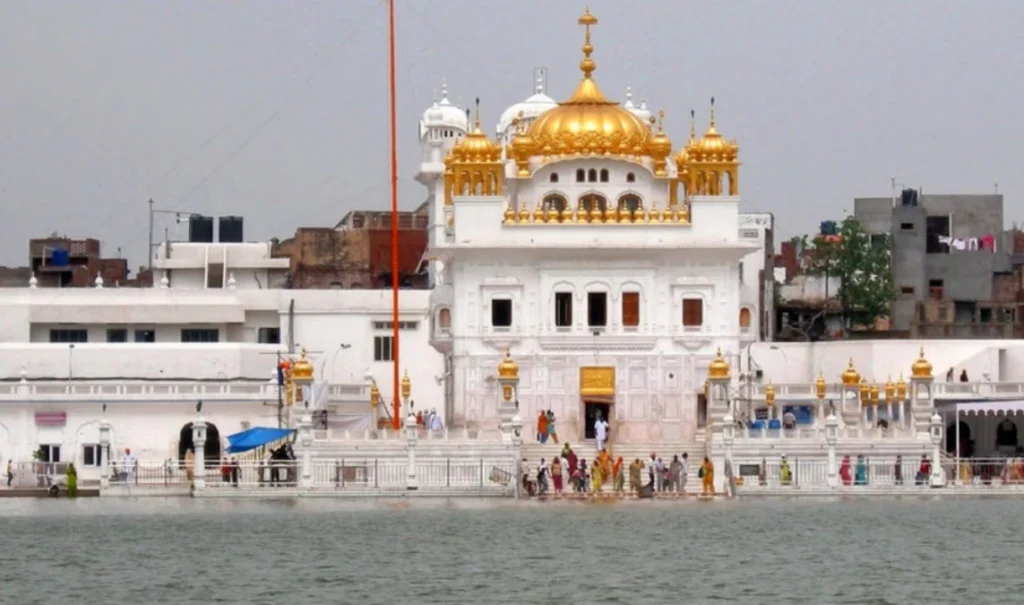“Discover Tarn Taran District in Punjab, known for its spiritual heritage, rich culture, and thriving agriculture. Explore its historical landmarks and sacred sites.”

Explore Tarn Taran: Rich Culture, History & Sacred Land
Tarn Taran district, located in the northwestern part of the Indian state of Punjab, holds a rich historical and cultural significance. Named after the holy sarovar (pond) Tarn Taran Sahib, the district is characterized by its religious heritage, agricultural prominence, and unique traditions.
The district’s centerpiece is the Tarn Taran Sahib Gurdwara, an important Sikh pilgrimage site. The gurdwara was built by Guru Arjan Dev Ji, the fifth Sikh Guru, and its sarovar is believed to have healing properties. Pilgrims from across the country visit this serene place seeking spiritual solace and a dip in the sacred waters.
Tarn Taran is renowned for its historical legacy, as it played a pivotal role in the Indian freedom struggle. The Jallianwala Bagh massacre of 1919 took place in Amritsar, just a stone’s throw away from Tarn Taran. The district’s close proximity to this tragic event underscores its historical relevance in shaping India’s destiny.
Agriculture forms the backbone of Tarn Taran’s economy. The fertile land is primarily dedicated to the cultivation of wheat, rice, and various fruits and vegetables. The district’s agricultural practices are deeply ingrained in its culture, and traditional farming methods often coexist with modern techniques.
Culturally, Tarn Taran embraces its Punjabi roots with enthusiasm. The residents celebrate festivals like Baisakhi, Diwali, and Gurupurab (the birth anniversary of Guru Nanak Dev Ji) with great fervor. The district’s traditional music, including folk songs and Bhangra dances, showcase the vibrancy of its culture.
The community spirit is palpable in Tarn Taran, with a strong emphasis on religious harmony. The district is home to various religious communities, including Sikhs, Hindus, and Muslims, who coexist in a spirit of mutual respect. This unity is further exemplified by the fact that the district has a considerable population of families who follow the tenets of Sufism.
Despite its cultural and historical significance, Tarn Taran faces its share of challenges. Like many rural areas, it grapples with issues such as lack of access to quality education and healthcare, as well as unemployment. Efforts to modernize the region while preserving its heritage are ongoing, with initiatives aimed at improving infrastructure and fostering economic growth.
Famous Places in Tarn Taran District
Tarn Taran District is home to several famous places that showcase its rich cultural, historical, and religious heritage. Some of the notable attractions include:
Tarn Taran Sahib Gurdwara: A revered Sikh pilgrimage site, this gurdwara features a holy sarovar (pond) believed to have healing properties. It was built by Guru Arjan Dev Ji and is a hub of spiritual activity and devotion.
Goindwal Sahib: This town holds historical significance as Guru Amar Das Ji, the third Sikh Guru, established it as a center for religious activities. The Baoli Sahib, a historic well with 84 steps, is a prominent site here.
Harike Wetland and Bird Sanctuary: One of the largest wetlands in northern India, this sanctuary is a paradise for bird enthusiasts. It hosts a diverse range of migratory and resident avian species.
Khadoor Sahib: Known for the historic Gurdwara Khadoor Sahib, it holds religious significance as Guru Angad Dev Ji, the second Sikh Guru, spent a substantial part of his life here.
Jallianwala Bagh, Amritsar: While not located within Tarn Taran District, it’s a nearby site of immense historical importance. The tragic Jallianwala Bagh massacre of 1919 took place here, leaving an indelible mark on India’s struggle for freedom.
Patti: This town is famous for its annual fair called “Puranmashi” which attracts a large number of visitors. The Gurdwara Ber Sahib, associated with Guru Nanak Dev Ji, is another notable site in Patti.
Khemkaran: It gained historical significance during the Indo-Pak wars and is home to the “Tank of Patton,” a war memorial.
Ranjit Singh Museum, Amritsar: Dedicated to Maharaja Ranjit Singh, this museum houses artifacts and memorabilia related to his life and reign, offering insights into Punjab’s history.
Ram Tirath Temple: A revered Hindu temple complex near Amritsar, it’s believed to be the birthplace of Lav and Kush, the sons of Lord Rama.
Pul Moran: A historical bridge with a tragic past, Pul Moran is associated with the escape of a large number of people during the Partition of India in 1947.
These famous places collectively contribute to Tarn Taran District’s cultural diversity, historical importance, and spiritual significance. Visitors are treated to a blend of religious fervor, natural beauty, and a glimpse into the region’s past, making it a destination worth exploring.
Read More :-
Sangrur District: Rich History, Culture & Agricultural Power